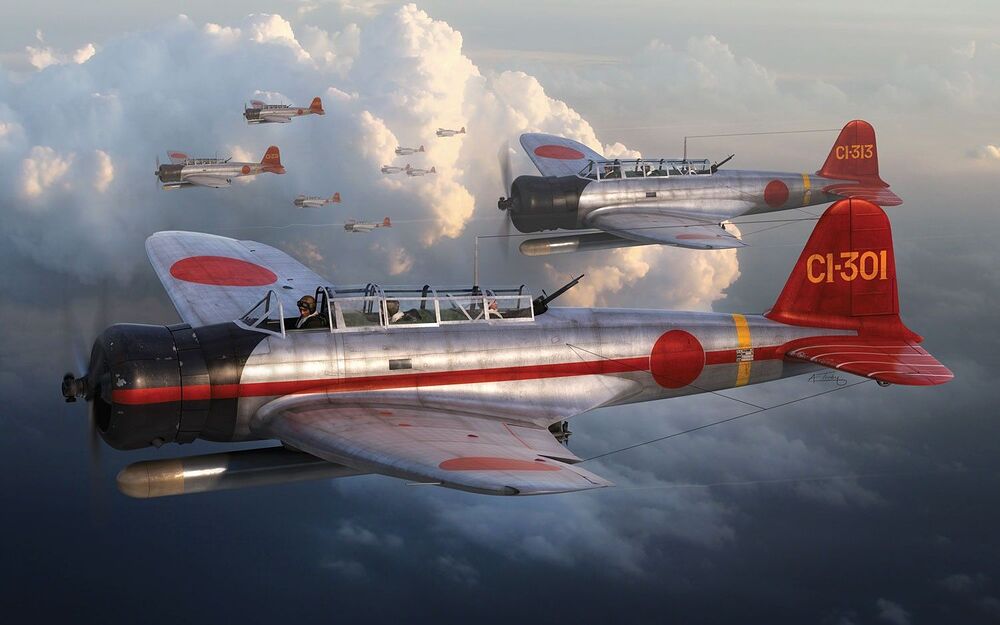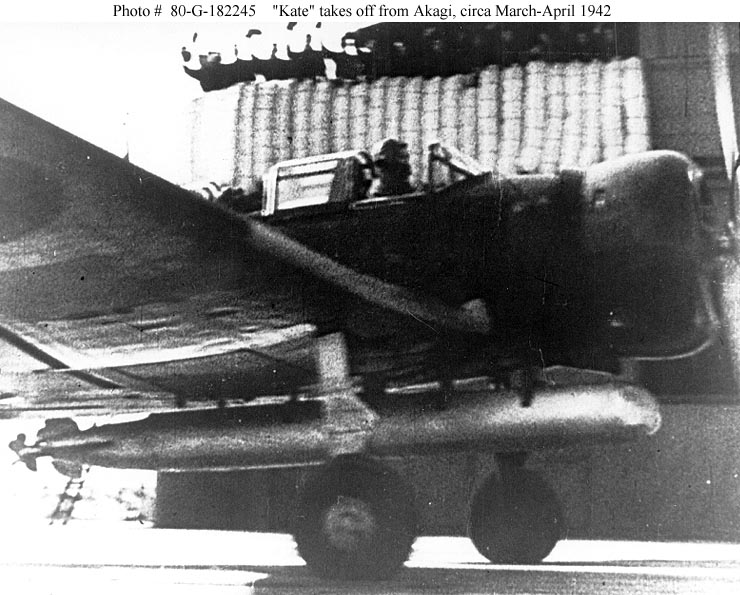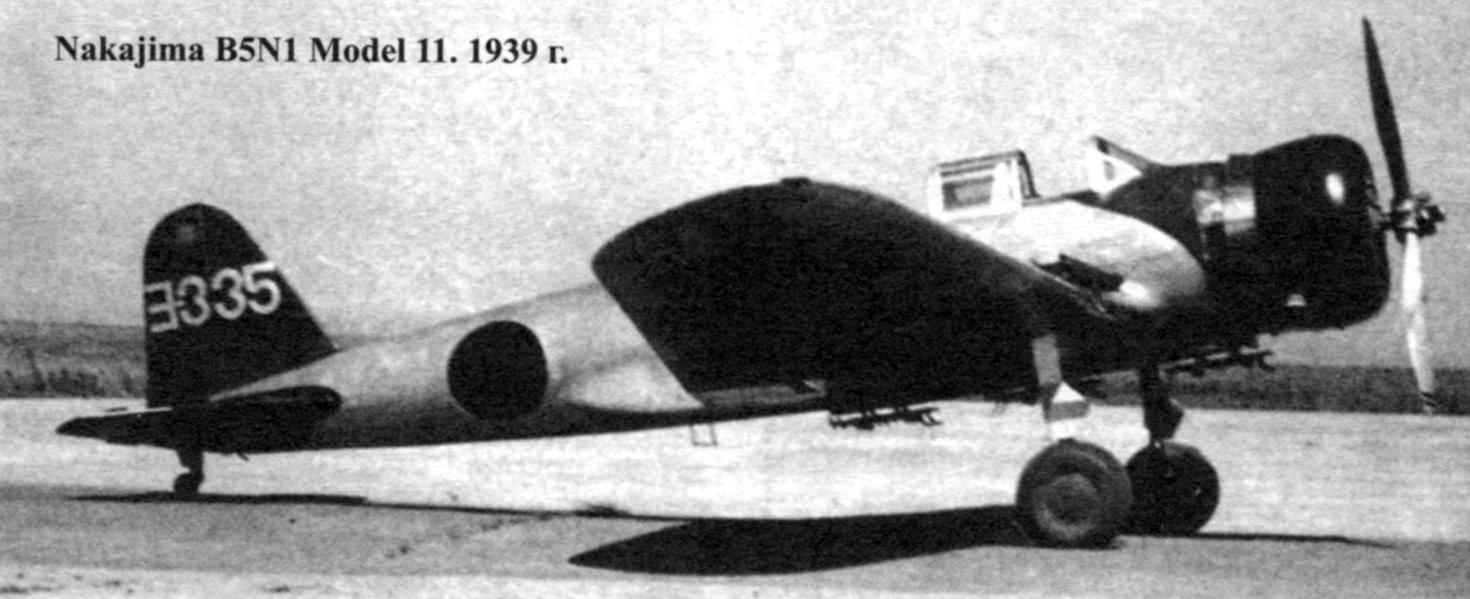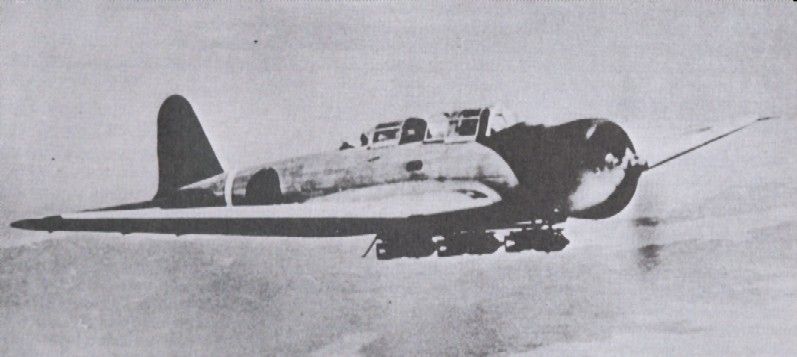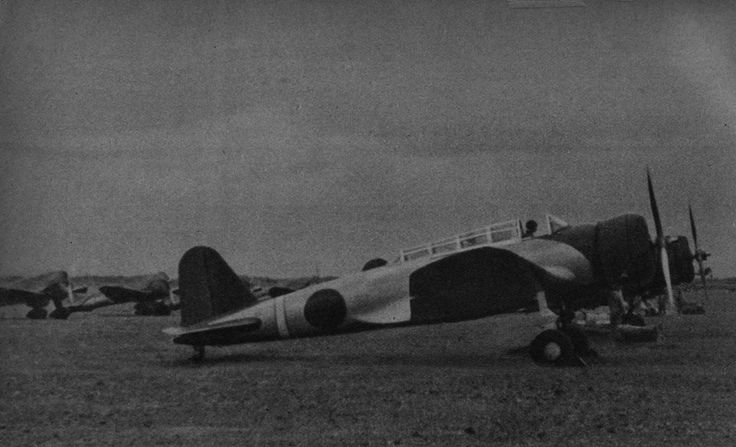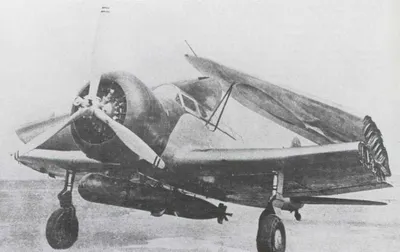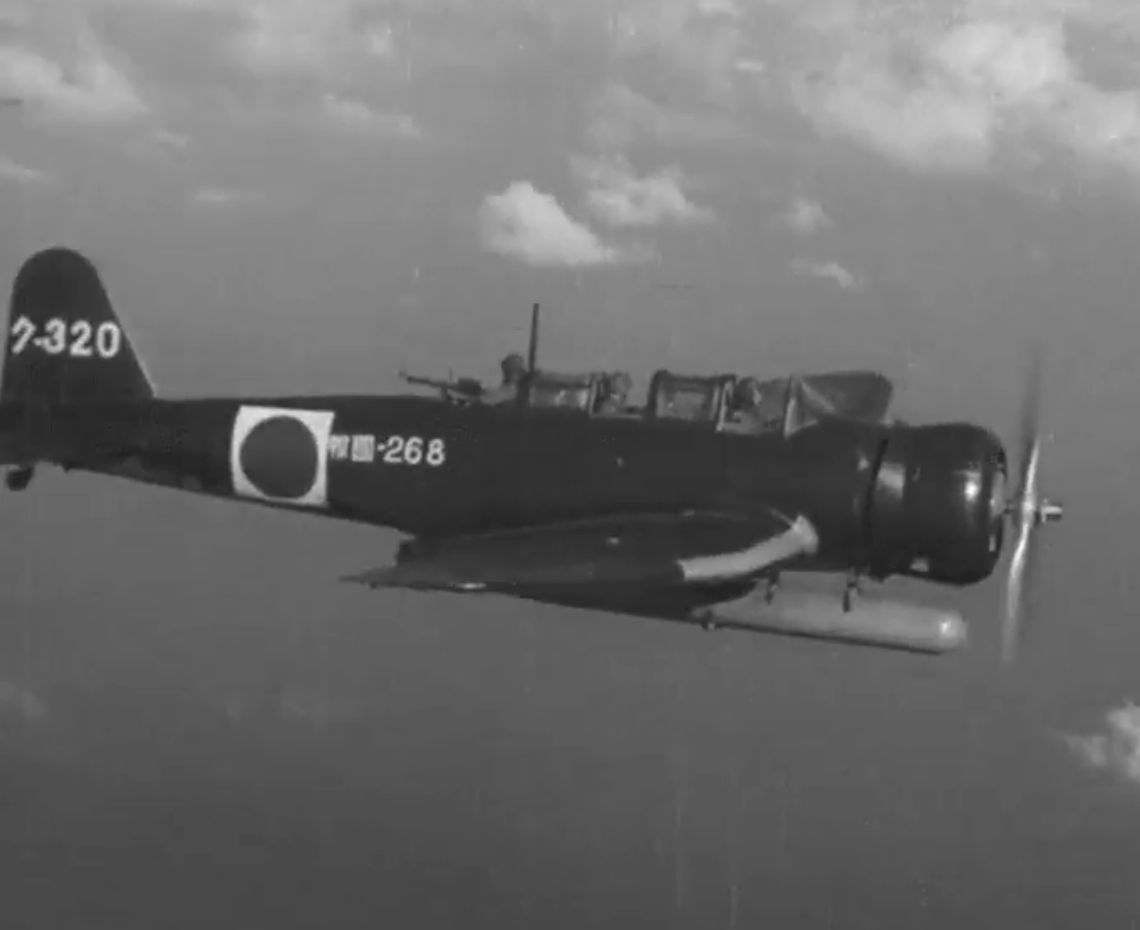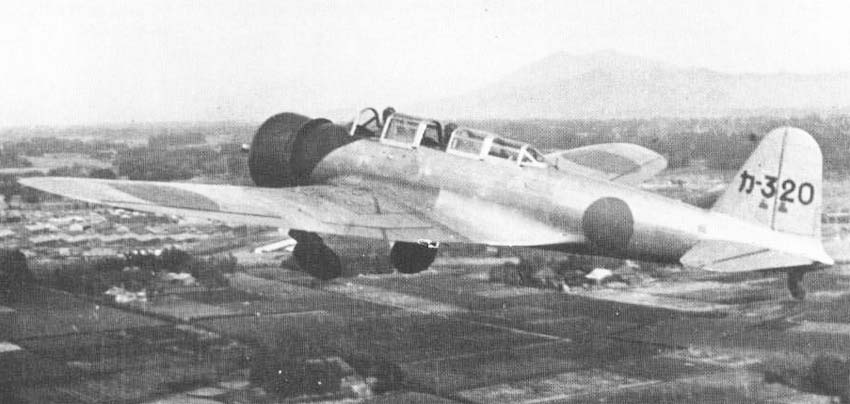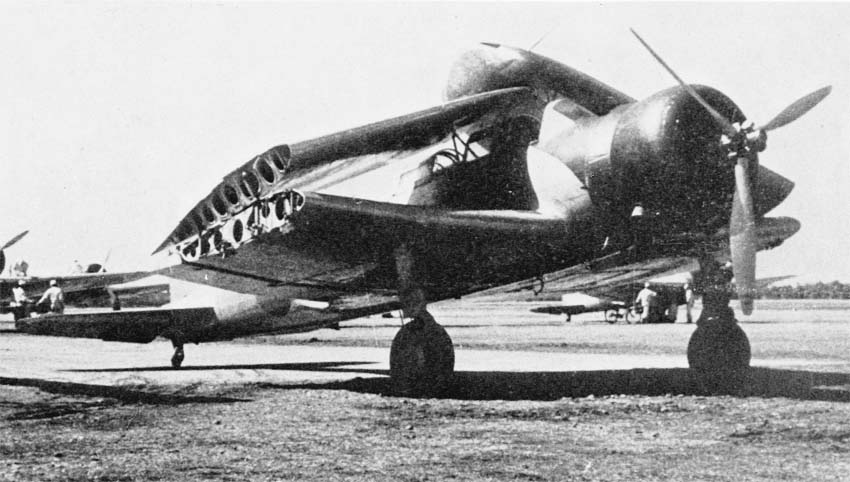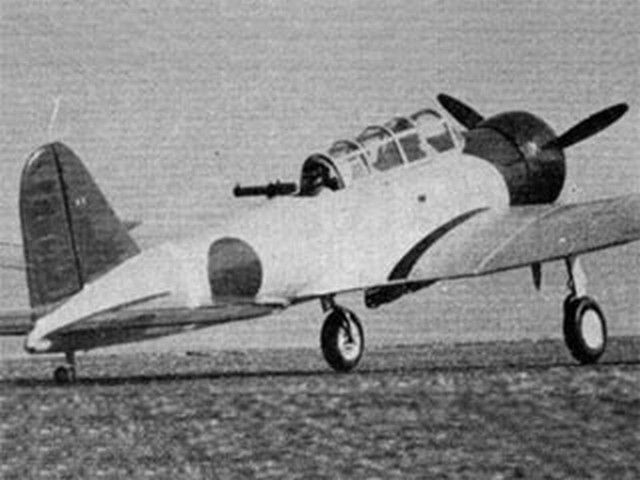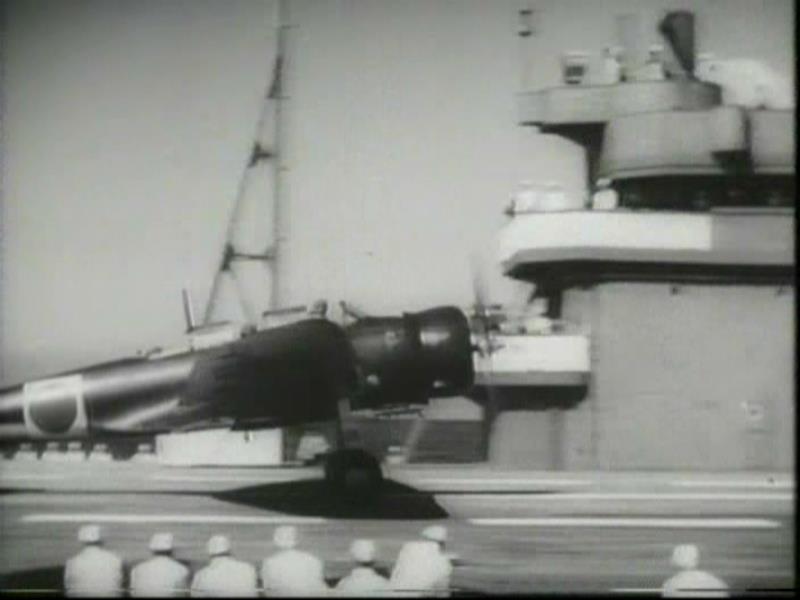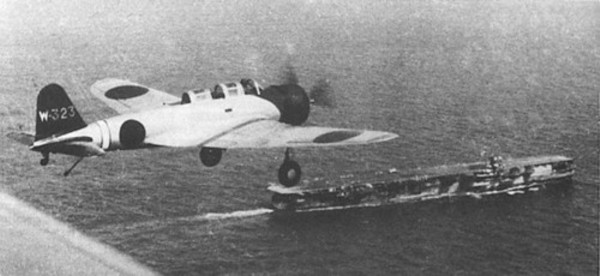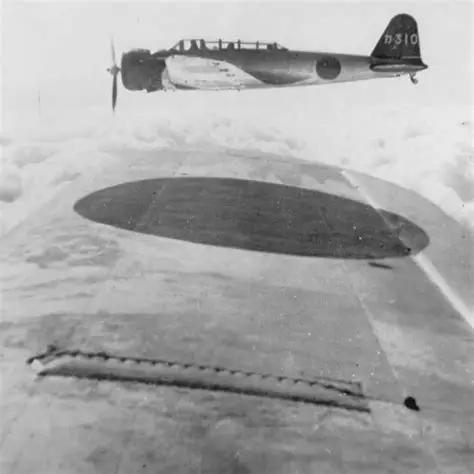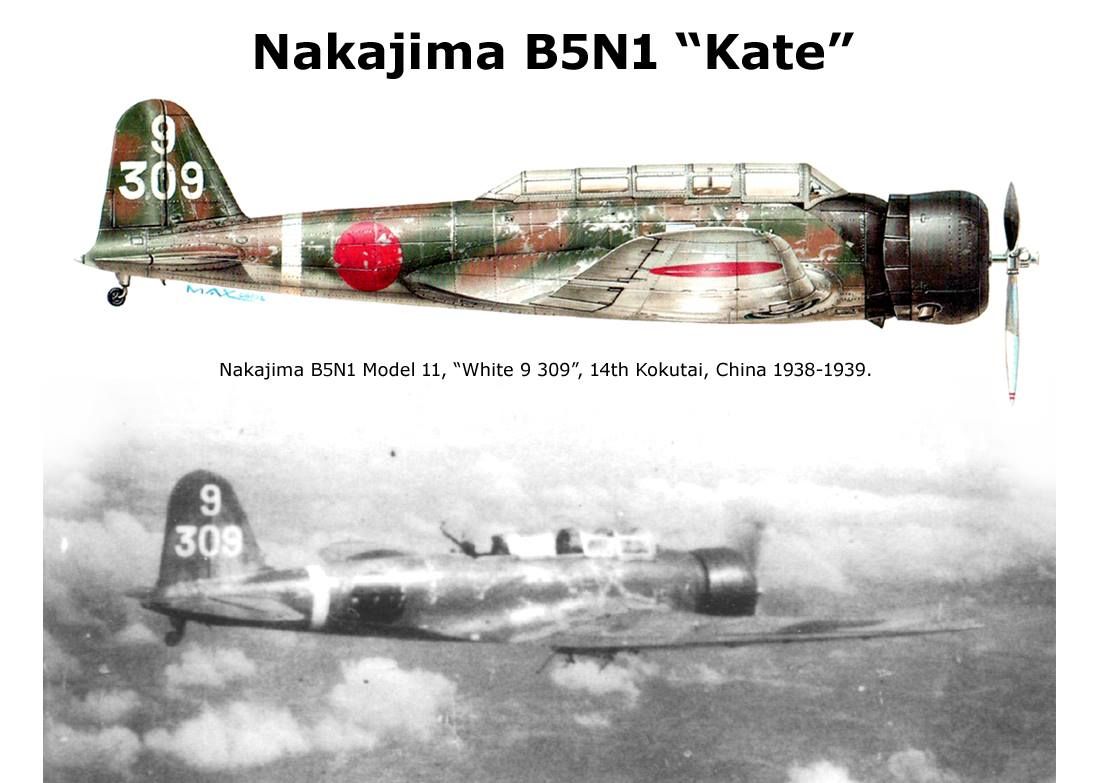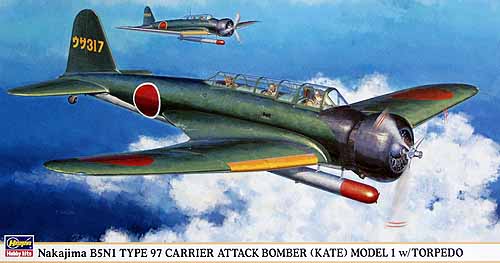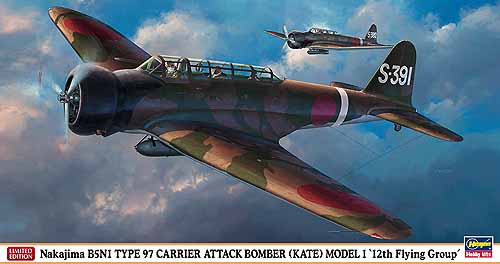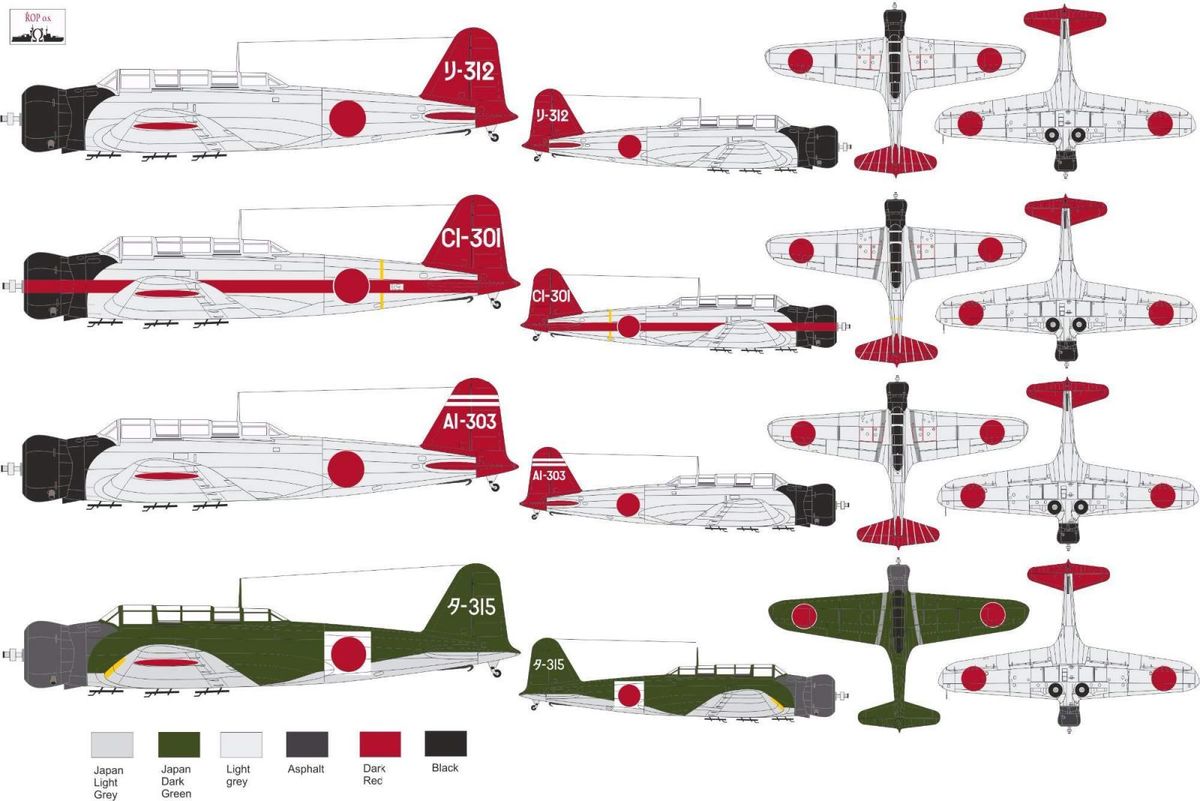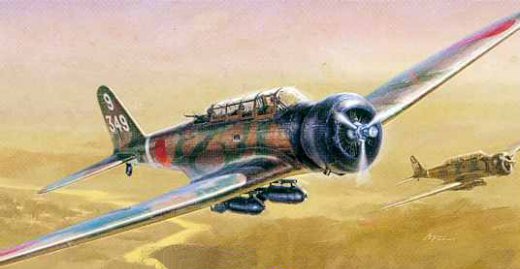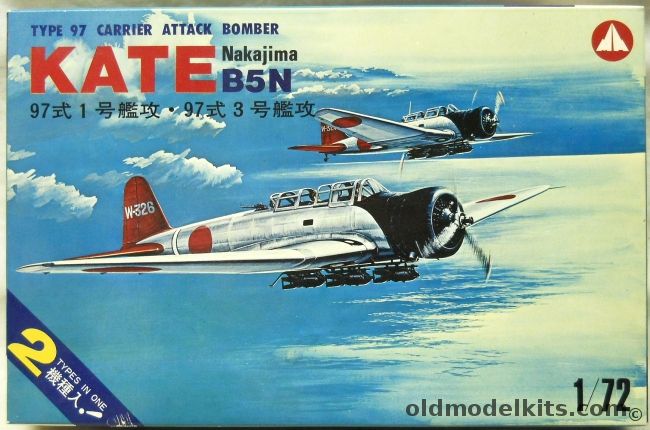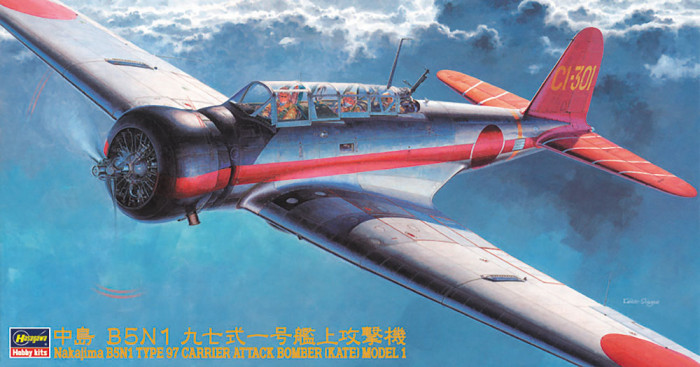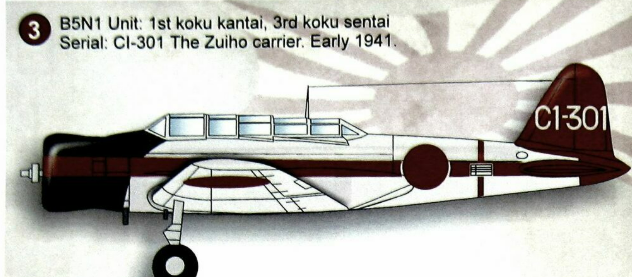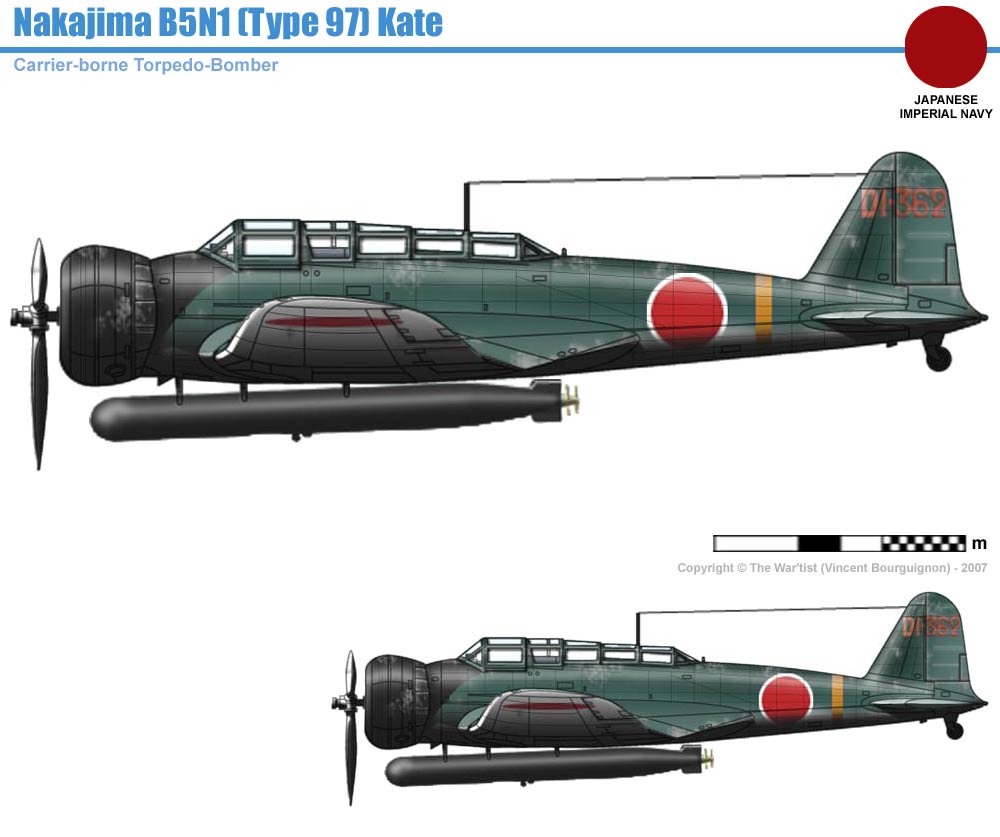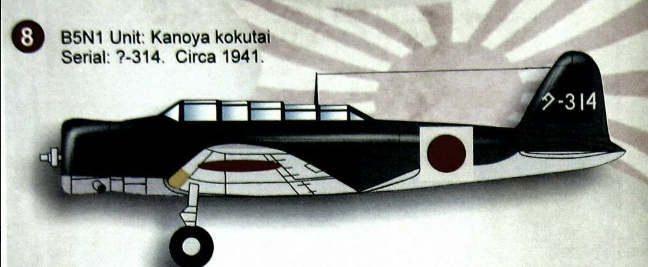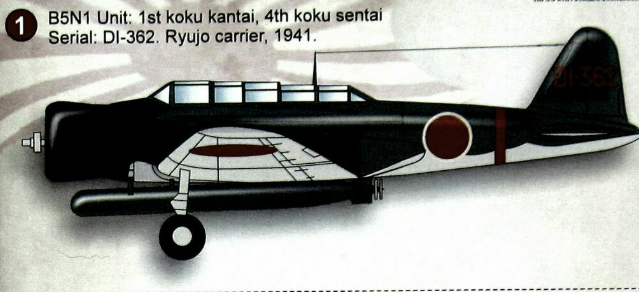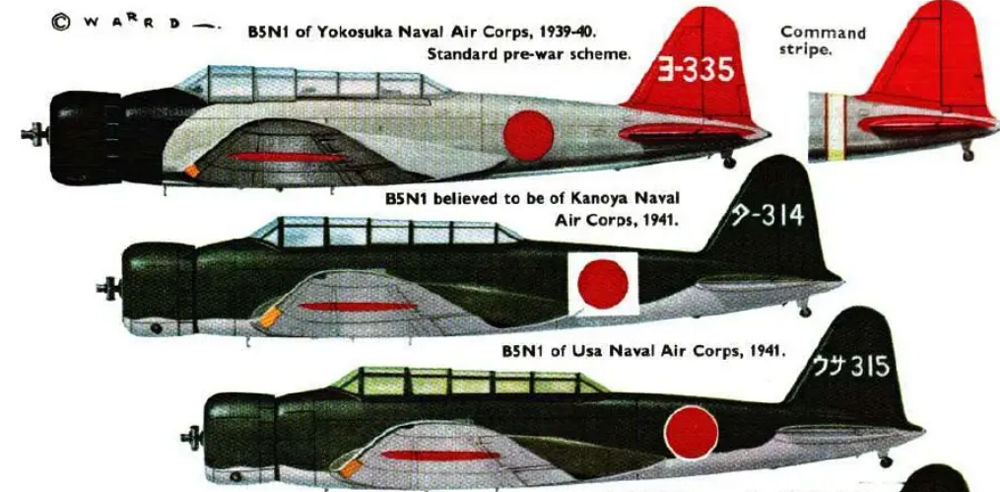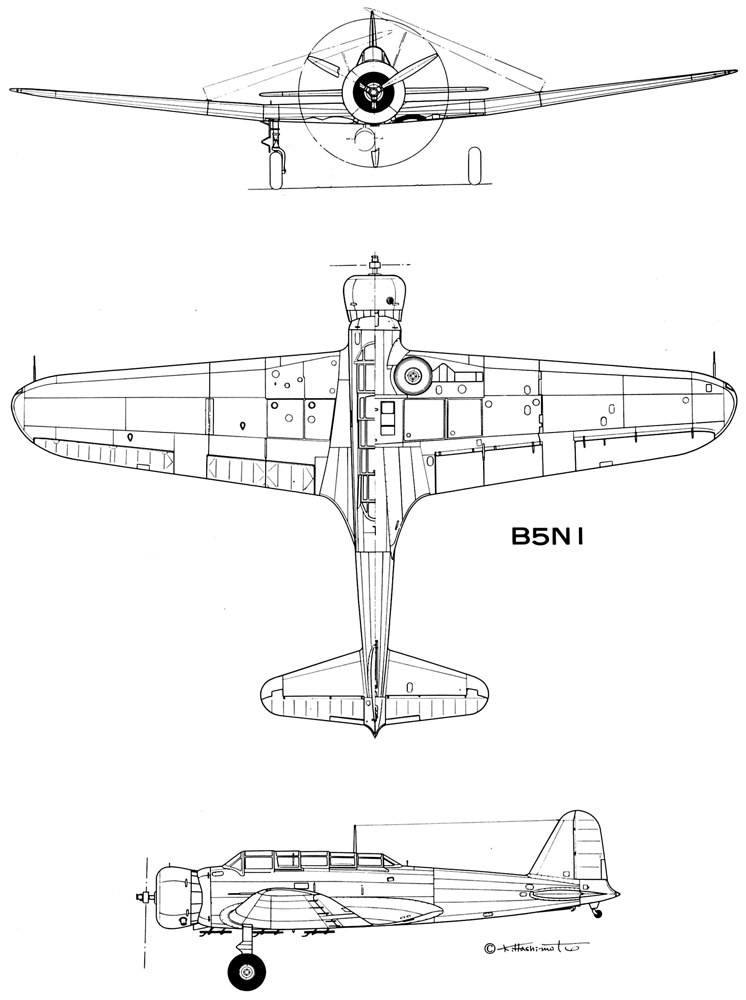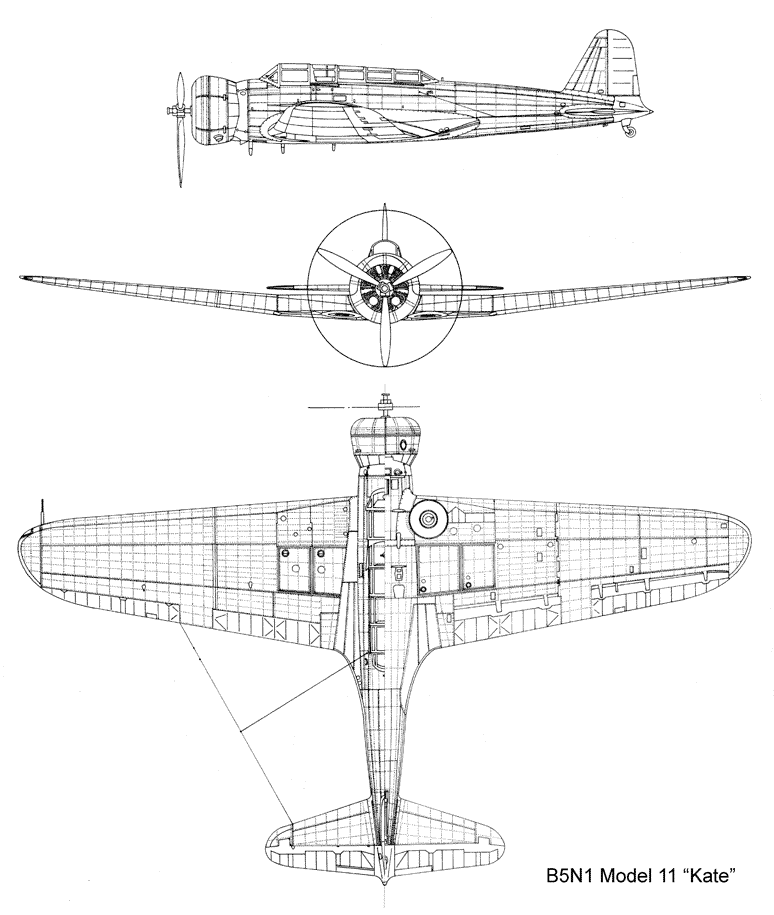- Yes
- No
Nakajima B5N1 Model 11 (九七式艦上攻撃機一一型)
The Nakajima B5N1 Model 11 is a Japanese torpedo bomber that was developed in 1937. Between 1937 and 1939, 125 Nakajima B5N1 aircraft were produced. These aircraft initially participated in combats in China, and from 1941 onwards they were active in the Pacific. Some B5N1 aircraft were converted into the advanced training aircraft B5N1-K.
History
In 1935, the Japanese navy, which was conducting a competition for a new carrier torpedo plane (the 9-Shi competition was completed in 1936, and the winner was the Yokosuka B4Y1), noticed that biplanes were outdated and there was a need for modern torpedo planes. Therefore, for this purpose, it submitted the requirements for the 10-Shi competition to Mitsubishi and Nakajima. The requirements were as follows:
- The plane was supposed to be a monoplane.
- The aircraft was supposed to have folding wings to facilitate the storage of aircraft in the hangars on the aircraft carrier
- A maximum speed of over 330 km/h was required.
- The aircraft was to carry 800 kg of bombs or one torpedo weighing 800 kg.
- It was required that the aircraft with a full load (800kg of bombs) had an endurance of 4 hours in the air and 7 hours in reconnaissance flight (without the bomb load)
- It was required for the aircraft to have a three-person crew.
At Nakajima, the design of the future B5N was designated project “K” and was overseen by engineer Katsujiero Nakamura. During the work, engineers collaborated with their colleagues who were working on project “S” (the future Nakajima C3N1). The aircraft was initially designed with Fowler flaps and hydraulically folding wings. Nakajima project “K” was designed as a modern and elegant construction. In 1936, the design work was completed and construction of the first prototype began. The prototype of the future B5N1 was completed on December 31, 1936. On January 8, 1937, the first flight of the B5N1 aircraft took place. Another test flight was scheduled for January 25 of the same year, but during taxiing, the landing gear collapsed, forcing the aircraft to return to Nakajima for repairs. After the repair, the aircraft was sent for testing to the Navy headquarters, where it participated in a comparison with the Mitsubishi B5M aircraft. The airplane was rated very well in tests, but the applied Fowler flaps were criticized, and the hydraulic wing folding mechanism, which worked poorly, needed to be removed (the Japanese had problems with hydraulic systems in airplanes until the end of the war). To comply with the navy’s requirements, a second prototype was created in the spring of 1937. This airplane had simpler flaps, manual wing folding, and used the Nakajima Hikari 3 engine instead of the Nakajima Hikari 2. A couple of improvements and methods to reduce weight were also implemented (it was decided that the upper part of the fuel tank in the wings would be part of its skin). The second prototype ultimately convinced the navy to adopt the Nakajima airplane. In November 1937, the aircraft was accepted into service as the B5N1 or Type 97 Carrier Attack Bomber No. 1 (九七式一号艦上攻撃機). However, due to the outbreak of the Second Sino-Japanese War, there was a huge demand for bombers overnight, so the competing Mitsubishi B5M1 was also introduced into service. The B5N1 aircraft during fights in China proved to be a modern and deadly effective airplane. Time and again, the B5N bombers set out on bombing missions without escort and were able to flawlessly execute their assigned tasks. However, several problems with the engines and other components were noted. Therefore, in 1938, the B5N1 prototype with the Nakajima Sakae NK1B engine was created, and from 1939 it was introduced into serial production as the B5N2. The B5N1 aircraft were still used on the front lines at the outbreak of the Pacific War, but were quickly sent to rear units and secondary tasks. Some B5N1 aircraft were converted into the advanced B5N1-K training aircraft. By the end of the Pacific War, B5N1 aircraft participated in Kamikaze missions and anti-submarine warfare.
Construction description
The Nakajima B5N1 aircraft is very similar to the Nakajima B5N2 from the game, but there is an important difference between them. The B5N1 is equipped with a Nakajima Hikari 3 engine, an air-cooled nine-cylinder star engine with a takeoff power of 566 kW (770 HP) instead of the Nakajima Sakae NK1B engine, an air-cooled double-star fourteen-cylinder engine with a takeoff power of 735 kW (1000 HP). Additionally, the aircraft is equipped with a three-blade, metal propeller with a fixed rotation speed and a diameter of 3,277 mm, instead of a three-blade, metal propeller with a fixed rotation speed and a diameter of 3,200 mm.
Comparison of Nakajima B5N1 and B5N2
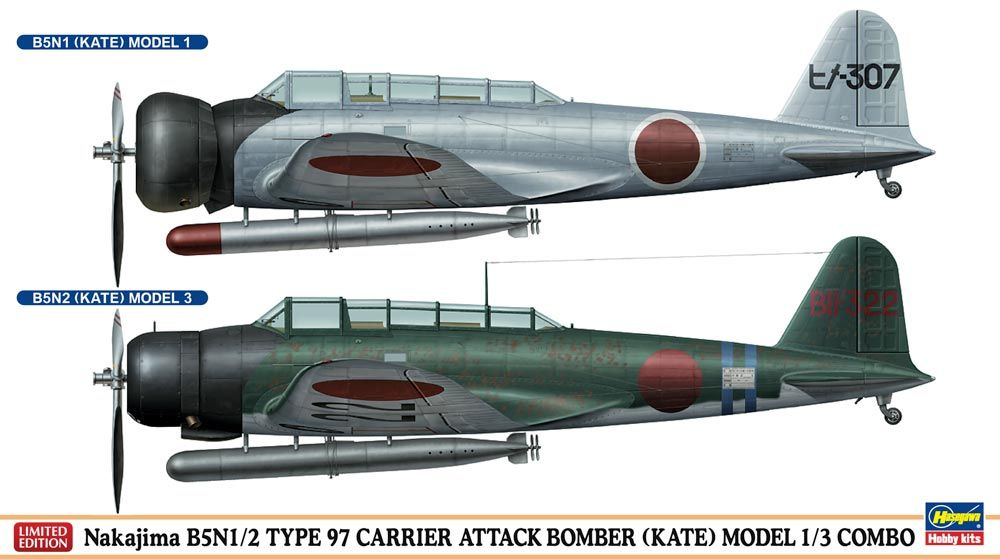
General characteristics
- Crew: 3
- Length: 10,312 m
- Wingspan: 15,519 m
- Height: 3,708 m
- Wing area: 37,70 m2
- Empty weight: 2099 kg
- Gross weight: 3698 kg
- Maximum Take-off Weight: 4015 kg
- Powerplant: 1 x Nakajima Hikari 3 engine, an air-cooled nine-cylinder star engine with a takeoff power of 566 kW (770 HP)
- Propellers: Three-blade, metal propeller with a fixed rotation speed and a diameter of 3,277 mm
Performance
- Maximum speed: 368 km/h
- Cruising speed: 251 km/h
- Range: 1092 km
- Maximum Range: 2275 km
- Service ceiling: 7400 m
- Climb Rate: 6,1 m/s
- Rate of climb: 7,83 min do 3000 m
Armament
- Guns:
- 1 x Type 92 7.7mm mobile machine gun in the rear gunner’s position
- Bombs:
- 1 x 800 kg bombs (under the fuselage)
- 1 x 500 kg bombs (under the fuselage)
- 2 x 250 kg bombs (under the fuselage)
- 2 x 250 kg bombs + 6 x 60 kg bombs (under the fuselage) (?)
- 2 x 250 kg bombs + 6 x 30 kg bombs (under the fuselage) (?)
- 6 x 60 kg bombs (under the fuselage)
- 6 x 30 kg bombs (under the fuselage)
- 1 x 800 kg torpedo (under the fuselage)
Special thanks
Summary
The Nakajima B5N1 is an interesting aircraft for Japan in War Thunder. This aircraft would be a good addition at a lower BR for the Nakajima B5N2 bomber. The Nakajima B5N1 is a very useful torpedo bomber that, thanks to its suspended armament, can destroy various targets from tanks to bases and ships. This aircraft is great as an addition to the tech tree, but also as a premium aircraft or for events. I encourage you to discuss in the comments and to share your own knowledge on this subject.
Finally, I apologize for the linguistic and logical errors because unfortunately English is not my main language and I had to use google translator.
Internet sources
九七式艦上攻撃機 - Wikipedia
Nakajima B5N - Wikipedia
九七式艦上攻撃機/中島・三菱Nakajima B5N/Mitsubishi B5M | 大日本帝国軍 主要兵器
九七式艦上攻撃機/Nakajima B5N:大日本帝国海軍 航空機
Nakajima B5N “Kate” (1937)
Nakajima B5N ‘Kate’
Warplanes of Japan: Nakajima B5N
Nakadžima B5N1 11 [Kate] : Nakadžima
Уголок неба ¦ Nakajima B5N
Nakajima B5N Type 97 “Kate” - Pacific Eagles
Book sources
- Japanese Aircraft of the Pacific War page 411-416
- Bunrindo - Famous Airplanes of The World 32 - Nakajima B5N Navy Type 97 Carrier Torpedo Bomber
Bunrindo - Famous Airplanes of The World 32 - Nakajima B5N Navy Type 97 Carrier Torpedo Bomber | PDF - (Wydawnictwo Militaria No.145) Aichi D3A Val/Nakajima B5N Kate
(Wydawnictwo Militaria No.145) Aichi D3A Val/Nakajima B5N Kate | PDF - Profile Publications Aircraft 141 - Nakajima B5n Kate
Profile Publications Aircraft 141 - Nakajima B5n Kate | PDF - Japanese Aircraft of Wolrld War II : 1937-1945 ,Thomas Newdick, Edition 2 2017, page 60-61

Thank you for reading the suggestion, see you in the next one. Good luck pilots

